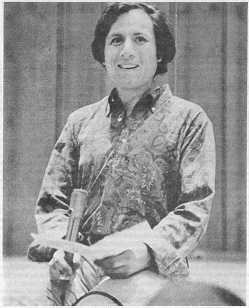
QUESTION: Sometimes you hear that very tight clothing around the scrotum of the male can cause sterility. I just can’t believe that. Athletes, particularly professionals, wear jock straps several hours daily, ballet dancers live day in and day out with tight leotards, and male fashions today may often call for very tight slim underwear. What is the truth about tight clothing and male sexuality? What does medical research show?
ANSWER: Another reader posed the same question in a different way. He asked, “What is the lethal factor formed by males wearing uptight trousers?”
A brief discussion of the function of the scrotum is necessary in order to explain why “uptight” trousers and underwear are thought to have an effect on male fertility.
Why is it that most animals carry the testicles within their bodies while man carries them in a sac accessible to knees, clubs and caresses? The reason seems to be that man’s body temperature of 98.6 degrees F. or 37 degrees C. is too high for the production of sperm. During development of the fetus, the testes normally descend from the body cavity into the scrotal sac. Males with two undescended testicles will be infertile unless corrective measures are taken before the age of five or six. The chief function of the scrotum seems to be to separate the testicles from the rest of the body in order to maintain them at a temperature optimal for the production of sperm.
Cold weather causes the cremaster muscles to contract, thus drawing the scrotum closer to the body (fear can stimulate the same protective reflex.) The “cremasteric reflex” is one of the tests in a neurological examination. To observe the effect of this test, scratch the inner side of your thigh (or that of a very close friend) with your fingertip. You should see the testicle withdraw on that side.
An article in the April 27, 1968 Journal of the A.M.A. reported the results of applying heat and cold to the scrotum. Authors Robinson, Rock and Menkin of the Rock Reproductive Clinic found that heating the scrotum depressed the production of sperm while cooling the scrotum increased sperm production.
In normal subjects exposure of the scrotum to a 150 watt electric light bulb for 30 minutes on 14 consecutive days caused a decrease in spermatogenesis. Application of an ice-bag to the scrotum for 30 minutes a day on 14 consecutive days (following the exposure to heat) stimulated spermatogenesis so much that the mean sperm count was nearly three times the sperm count before treatment for those with low sperm counts, often a cause of male sterility.
Half the subjects in their experiments reported a considerable increase in libido two or three weeks after heating the scrotum. The authors suggest that in normal males fertility could be diminished by sitting on hot machinery, wearing tightly-woven protective clothing or by taking long hot baths.
“Even relatively simple alterations in male dress, in deference to fashion, conceivably may render a healthy young man comparatively infertile.
They also suggest that actively cooling the testicles by swimming in cold water may serve as a psychological means of increasing fertility.
Sequential application of heat and cold seems to have been pioneered by the lusty Scandinavians. They follow the Yin-Yang principle by steaming themselves in sauna baths before running naked in the snow or leaping into icy pools (arrgh!).
What does a Scotsman wear under his kilt? Most likely a healthier pair of testes than those bound by close fitting underwear and tight jeans. Togas anyone?
